Few cities boast a cultural heritage as bewitching as that of Luang Prabang, Laos. Having served as the capital of the ancient Kingdom of Lan Xang from the 14th-16th century, and the capital of Laos under French colonial rule, the city – whose name means “Royal Buddha Image” – mesmerizes with its timeless charm. Part of it was even named to the UNESCO World Heritage List in 1995, earmarking its preservation for future generations.
Sunlit streets, elaborate temples, the aroma of tamarind-infused stews – there’s plenty of things to do in Luang Prabang that will delight your senses. And if you’re looking for a slow, relaxing, culturally immersive trip, there’s no better place than this.
Things to do in Luang Prabang
I toured the city with a local guide, Xay, and highly recommend you do so too – there’s plenty of history and trivia that you won’t get from going around on your own! These are the Luang Prabang guided tours I recommend:
- Half Day City Tour + Pak Ou Caves. This actually adds up to a full-day tour and includes six activities in this guide (1, 2, 4, 7, 9, 13), including the longboat ride to Pak Ou Caves. Admission to attractions, lunch, and transfers to/from your hotel are also included.
- Luang Prabang City Tour + Kuang Si Falls. This includes six activities in this guide (1, 5, 6, 7, 10, 11), including the trip out of town to Kuang Si Falls. Admissions and hotel transfers are included, but lunch is on your own.
- Half Day Luang Prabang City Tour. This includes five activities in this guide (1, 2, 5, 6, 7) and is great for a guided walk around the city.
1. Explore the city’s ancient wats
Luang Prabang is home to a network of ancient wats, or Buddhist temples and monasteries, which served as places of worship for residents of this ancient capital. These wats, with their gilded stupas, are how Luang Prabang got its nickname: the Golden City.
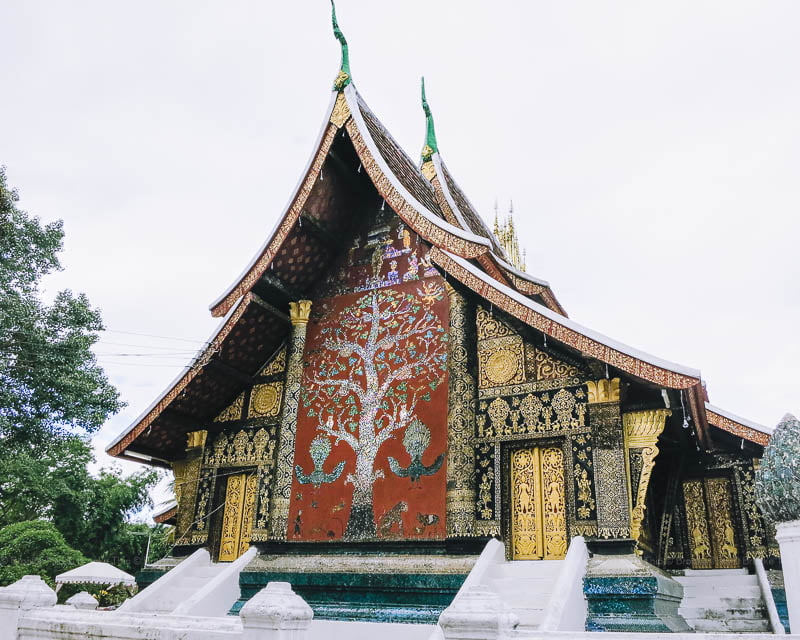
The most monumental of these is Wat Xieng Thong: built in the 1560s, it was patronized by the royal family and served as the venue for coronations. Its prestige can still be seen in gold-stenciled murals and ornate mosaics that decorate the walls.
There’s also Wat Visoun, which dates back to 1513 as the oldest standing temple in Luang Prabang, and Wat Aham, a much quieter abode with unique statues of tigers and temple guardians. Each temple’s architecture tells stories of devotion and artistic mastery, while the peaceful courtyards offer moments of contemplation. As you wander through, you’ll witness devotees offering prayers and paying homage, providing a glimpse into the enduring importance of Buddhism in Lao culture.
2. Climb to the top of Mount Phou Si
To get the best view of Luang Prabang, you’ll want to head to the top of Mount Phou Si – which, at 100m tall, is more of a hill. Still, there’s 328 steps to tackle before you’re rewarded with panoramic vistas that stretch across the old and new parts of the city.
Mount Phou Si, which literally means ‘sacred hill’, hosts two Buddhist temples as well as a panoply of religious icons, from a collection of Buddha statues marking the seven days of the week to naga serpents serving as handholds along the steps.
At dawn and dusk, the sun’s gentle rays cast a golden hue over the landscape; sunset is the most popular time to visit, but you’ll want to start early as there is little space at Wat Chomsi, the temple at the top of the hill. Mount Phou Si is a place of religious significance, so be respectful: dress modestly and do not bring alcohol up the hill.
3. Participate in a Baci ceremony
I personally found the Baci ceremony to be the best cultural experience I had in Laos. Baci, also known as Sou Khuan (‘calling the soul’), has been practiced in Laos even before Buddhism was introduced to the country in the 8th century. This intimate blessing reflects the traditional belief that the body is governed by 32 organs, and their individual spirits must be harmonized for health, happiness, and prosperity.
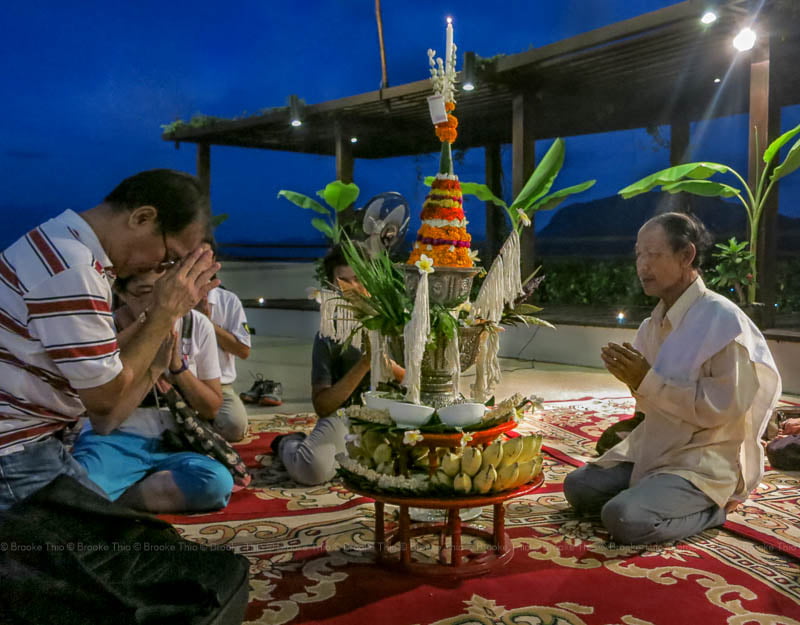
Essentially, during a Baci, a local male elder will chant to call the spirits while you, with other recipients of the blessing, gather around a ceremonial pyramid made from banana leaves and marigolds, and adorned with white cotton strings. With your hands on the edge of the table where the pyramid and other items are placed, ceremony attendants (usually female elders) will throw rice grains in the air to sprinkle you with good luck and tie multiple strings around your wrist. You’ll also be given some Lao whisky or snack to consume, as it’s believed to help keep the good spirits in your body.
The Baci is practiced for all major life events, such as weddings and baby showers, or even welcoming guests (which is how I got to be blessed). If you’re lucky enough to attend one, you should keep these blessing strings on your wrist for at least three days and then, only untie it – never cut it as that will sever your wishes.
If you’re unable to find a chance to join a Baci ceremony, you can book the experience online too. This heartwarming cultural experience speaks volumes about the significance of community in Lao society, and is sure to foster a connection for you that lingers long after the ceremony ends.
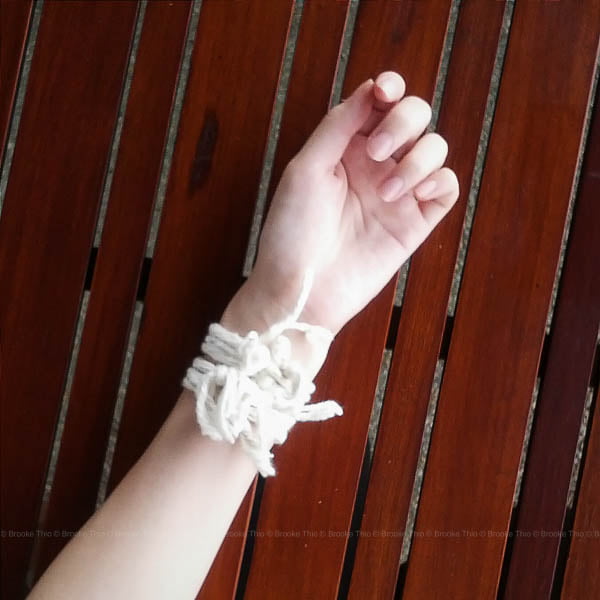
4. Soak up the vibes of the night bazaar
There’s more to see when the sun sets over Luang Prabang, and you can’t miss the night bazaar that sets up right in the heart of the city. This lively artists’ market isn’t just a shopping destination; it’s a cultural exchange that empowers local artisans while giving you the chance to take home a piece of Luang Prabang’s artistic soul.
Stroll through rows of stalls and admire the artisans’ proudly displayed handwoven textiles, silverware, and paintings. You’re almost certain to find something you’ll love – I bought two tissue box covers from the night bazaar that I’m still using to this day!
5. Observe a morning alms-giving

In the hushed dawn of Luang Prabang, a centuries-old tradition unfolds – one that encapsulates the essence of Lao spirituality and communal respect. The Tak Bat, or alms-giving ceremony, is one way locals gain merit, or karma: by offering daily sustenance to the monks who reside in wats across the city. In fact, historically, every man would undergo a short period of monkhood at a monastery or temple.
As drums echo softly from within temple walls, lines of devotees kneel along the sidewalk with containers of sticky rice or fresh fruit, which are then served by hand to the processions of saffron-clad monks. This happens rain or shine – the monks carry umbrellas if it rains.
Etiquette for alms-giving in Luang Prabang
With the growth of tourism and social media, Luang Prabang’s alms-giving ritual has witnessed more and more incidents reflecting ignorance and disrespect from tourists. If you plan to see the alms-giving, please be respectful and note the following:
- Do not participate in alms-giving unless you’re a Buddhist. This is a sacred act of faith for locals, not an opportunity for you to take photos/videos of yourself for social media. If you’re doing this as part of your spiritual beliefs, no one else needs to know about it.
- Dress appropriately, covering your shoulders and legs. You should ideally do this throughout your time in Luang Prabang as it’s a conservative and religious city.
- Do not talk to/touch/get in the way of the monks. Whether you’re giving alms or capturing the scene, make sure you don’t disrupt the procession.
- Observe from a respectful distance. Be as invisible as possible and don’t put anyone on edge. It’s best to take photos using a good zoom lens. You should never use a camera flash.
By observing this ritual from a respectful distance, you’ll witness this tradition in its most natural form, and gain deeper appreciation for the local culture.
6. Visit the Luang Prabang morning market
Each morning, Luang Prabang awakens to the rhythm of daily life pulsing through its morning market, Talad Tha Hua May – and it may well be the most exotic you’ve ever seen. It starts off innocently enough, with piles of dried goods and breakfast snacks.

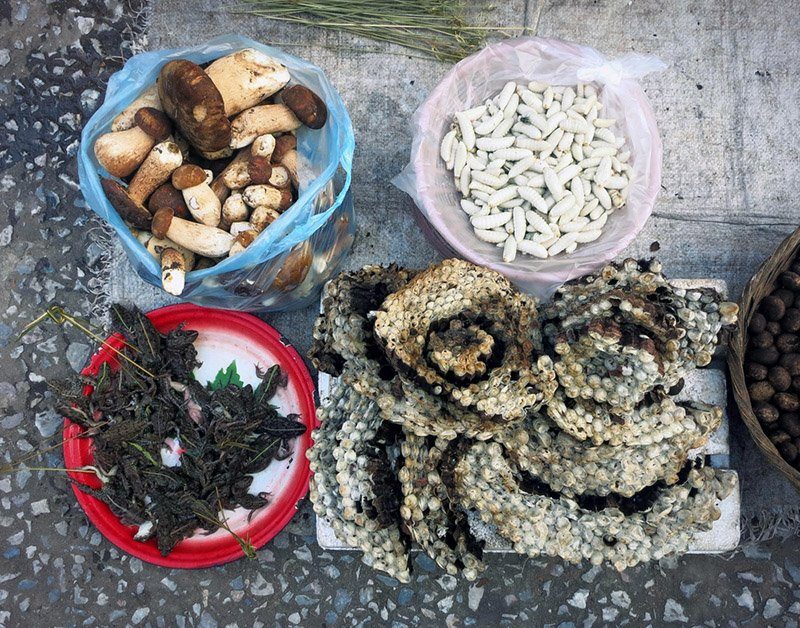
Things immediately get interesting, though. Keep a lookout for fresh frogs, grub, and even snakes! “Lao people will eat anything with legs, except tables and chairs,” chuckled Xay. And even things without legs, apparently.
Subsistence agriculture dominates the Lao economy, and most of the food sold in the morning market is grown in the sellers’ own homes, or caught in small amounts. Vendors with larger stalls are usually the midland or highland peoples like the Hmong, who have sufficient land to grow vegetables and fruit.
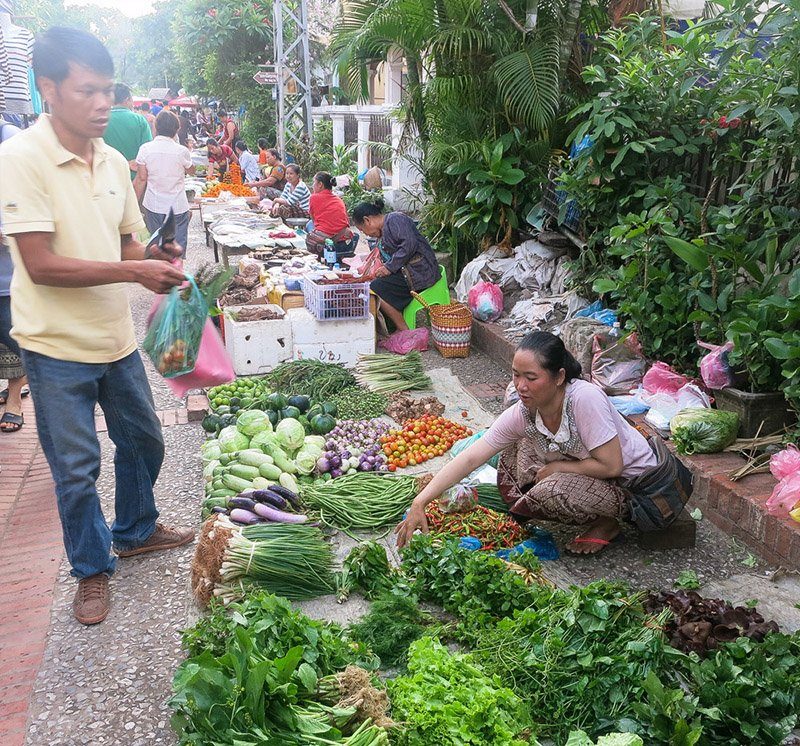
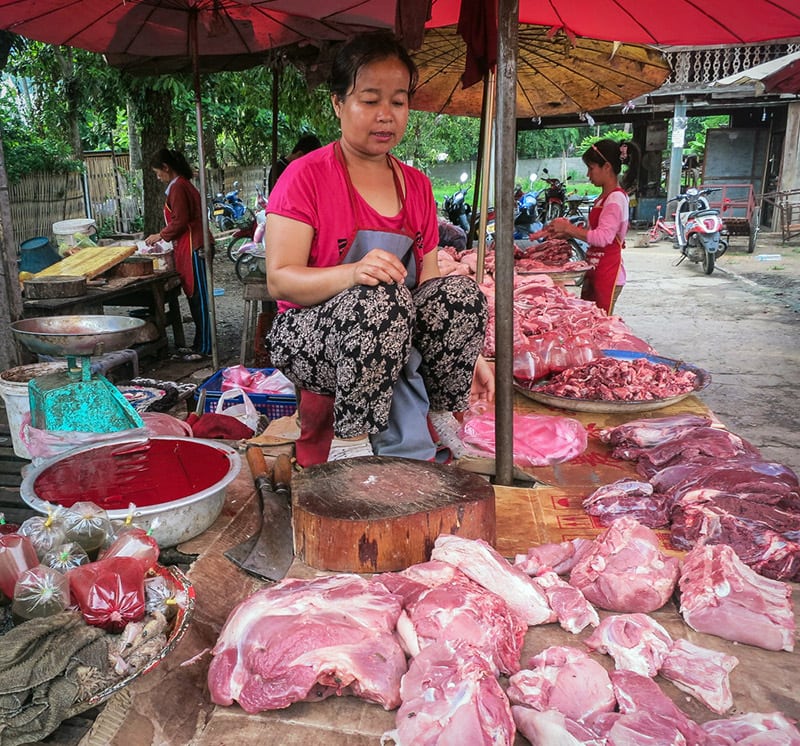
Finally, the other end of the Luang Prabang morning market is why you should start your day with an empty stomach. You’ll want to cop a few servings of sticky rice, banana cakes, grilled buffalo sausages, and crisp refreshing salads before you leave. Markets and supermarkets are an underrated “attraction” in any country; the variety and price of food and provisions can provide a mouthwatering glimpse into local culinary heritage.

Stroll along the rows of stalls and take in the vibrant colors, bustling energy, and animated exchanges all around you. The morning market is an immersion into the rhythms of daily life, where tradition and modernity coexist in captivating harmony.
The Luang Prabang morning market opens from 05:30 to 11:00 daily.
7. Tour the National Museum (and former Royal Palace)
Step back in time within the walls of the Luang Prabang National Museum, once the residence of Laos’ royal family. The museum’s elegant façade, blending traditional Lao and French Beaux-Arts architecture, was built in 1904 for King Sisavong Vong (whose name is used for Luang Prabang’s main road) and is a visual testament to the nation’s historical evolution. Inside, the regal halls are adorned with intricate artifacts, ceremonial treasures, and historical exhibits that chronicle Laos’ past.
As you traverse the opulent chambers, you’ll uncover stories of the monarchy’s influence and the country’s journey toward independence. The serene grounds also host a fascinating collection of classic cars that were used by the royal family, as well as the Haw Pha Bang pavilion.
Entrance fee: LAK 30,000.
Note: Photography is not allowed within the museum.
8. Relax at a French bakery
Amidst the echoes of Laos’ colonial past, the aroma of freshly baked pastries beckons you to Luang Prabang’s charming French bakeries. Laos was part of French Indochina from 1893-1953, and the resemblance of Luang Prabang to France is unmissable, especially when French colonial-style buildings can be found all across the city centre.
If you enjoy people-watching with a cup of coffee and a flaky Viennoiserie, make sure to visit one of the handful of French bakeries and cafés in town. Le Banneton is a local institution, while Le Cafe/Bistro Ban Vat Sene offers a fantastic fusion of French as well as Lao dishes. Sadly, several local favorites have closed down due to Covid.
9. Follow the Mekong to Pak Ou Caves
No visit to Luang Prabang would be complete without a ride along the Mekong River – the lifeblood of Indochina. Muddy yet mesmerizing, the Mekong’s waters hold plenty of fish, carry cargo around the region, and transport people to places like Pak Ou Caves.
Nestled within ragged limestone cliffs overlooking the river, the Pak Ou Caves houses a collection of Buddha statues, lovingly placed there by generations of pilgrims and ranging from life-sized statues to figurines no bigger than my thumb. Some of them gaze down benevolently from seemingly unreachable nooks in the limestone walls, and Xay explains this as a sign of sheer devotion.
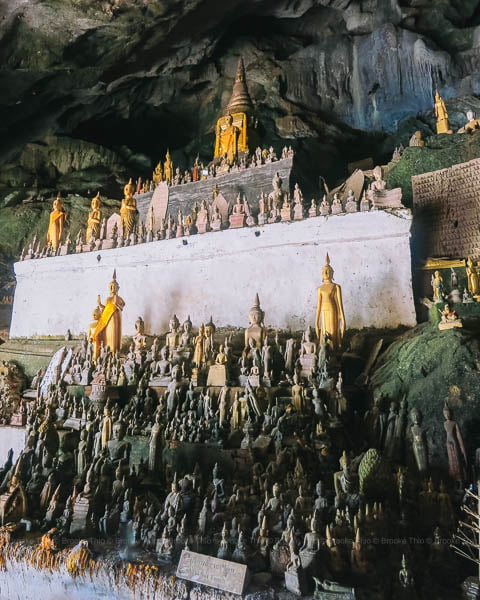
“Some people climb the caves to place their statues as high as possible, so it will not be stolen or washed away by the river,” he said.
Pak Ou Caves – emphasis on the plural – is made up of lower and upper cave sections, and you’ll need to climb 248 steep and uneven steps to reach the latter. Make sure you have a flashlight to illuminate the uneven cave floor…as well as the hundreds of gold-leafed Buddha statues sitting in the dark.
10. Visit Kuang Si Falls
Hidden within the lush embrace of the jungle, Kuang Si Falls stands as a testament to nature’s awe-inspiring beauty. This tiered cascade of turquoise pools – known as a travertine waterfall – owes its ethereal appearance to the calcified surface of the limestone rocks over which the water flows. The cool blue waters remind me so much of Canada’s glacial lakes that it’s hard to believe this is tropical Laos!
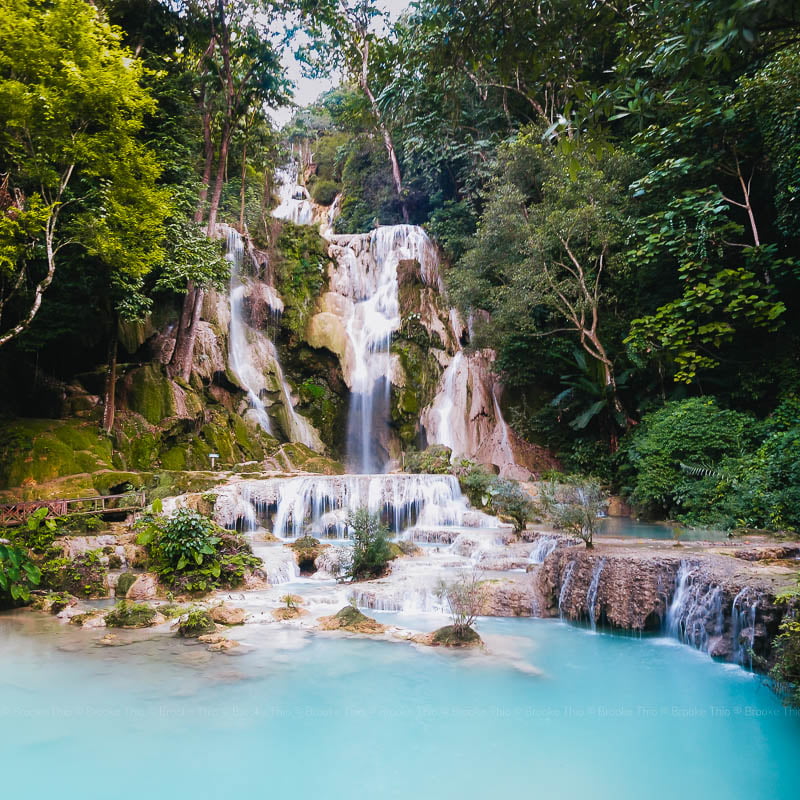
While this isn’t in Luang Prabang city itself, it’s located about 1 hour’s drive away and the visit should take up just half a day of your time. As you follow the forested trails, the sound of rushing water guides your steps. The tiered falls are actually fed by a main waterfall that plunges 60m from above, and a dip in these invigorating waters offers respite from the heat. Make sure to bring your swimwear and towel!
The falls are open from 8am-5.30pm daily, with an entry fee of LAK 20,000.
11. Learn about Laos’ diverse ethnicities (and support local craftspeople)
Unravel the threads of Laos’ cultural diversity at Luang Prabang’s Traditional Arts and Ethnology Centre (TAEC), where the lifestyles and heritage of four ethnic local groups – Akha, Hmong, Tai Dam, and Kmhmu – are showcased across permanent and special exhibitions. TAEC also holds free tours every Tuesday and Friday, as well as craft workshops and meet-the-maker sessions.
Another must-visit is Ock Pop Tok Living Craft Centre, a women-owned textile workshop that skillfully weaves Laotian textile traditions intro modern fashion. Here, you can participate in immersive workshops on weaving, fabric dying, Hmong embroidery, and more. Ock Pop Tok’s boutique is also a great place to shop for sustainable gifts, as you’ll be supporting local craftspeople and promoting the preservation of Lao culture.
12. Experience rice farming
During our time in Luang Prabang, Xay divulged another gem of a local saying: “Vietnamese grow rice, Cambodians watch the rice grow, and the Lao people just listen.” Of course, the verdant paddy fields surrounding Luang Prabang make it abundantly clear that this is another example of Laotian good humor.
The importance of sticky rice as a staple food is clear when you embark on an educational rice farming experience at The Living Land Farm, just 5km outside the city on the way to Kuang Si Falls. Here, you’ll gain a newfound appreciation for the age-old practice that sustains communities. Guided by local farmers, you’ll plant, harvest, and thresh rice – a tactile experience that will let you fully why the song goes: “planting rice is never fun”! Book the Living Land rice farming experience here.
13. Get a taste of local whisky
Venture into the world of lao lao, a traditional rice whisky deeply rooted in the country’s cultural fabric. At local village Ban Xang Hai, you’ll observe firsthand how rice is fermented and then distilled into this local spirit. While it may not be world-renowned and the facilities may seem run-down, lao lao’s role in community celebrations and rituals means production will keep going in its own humble way.
14. Savor Lao cuisine
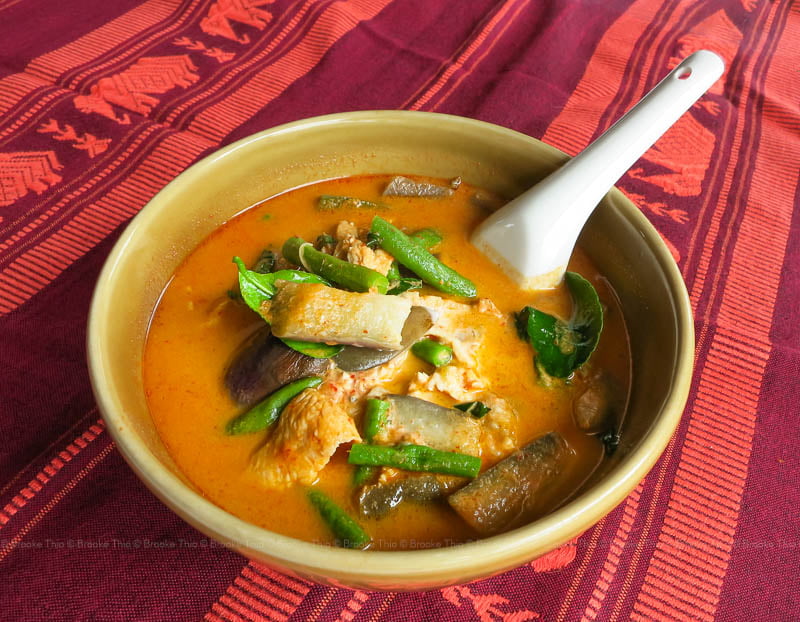
Although Lao food shares many similarities with Thai cuisine, it’s usually milder and more piquant in flavor – and with the intertwined history of Laos and northern Thailand, the Thai dishes you love may well be Lao in origin!
Whether you’re at a tourist-friendly restaurant or the morning market, make sure to try larb (a meat salad with vegetables, herbs, and chili), sai oua kwai (water buffalo sausage), and oua si khai (chicken-stuffed lemongrass skewers) – all accompanied by Laos’ signature sticky rice.
Want to take home the taste of Laos? Book this Luang Prabang cooking class hosted at Tamarind Restaurant. I’ve dined here myself and its food was stuff-my-face delicious.
Getting to Luang Prabang
By air: Luang Prabang is served by Luang Prabang International Airport (LPQ). I traveled from Bangkok to Luang Prabang on Bangkok Airways, but you can also fly from Vientiane, Hanoi, Chiang Mai, Siem Reap, and Kunming. Check flight prices
By rail: The Laos-China high speed railway, launched in late 2021, can take you from Vientiane to Luang Prabang in under 2 hours. However there’s currently no way for foreigners to book tickets directly (only an app for Laos residents). You can get tickets on 12Go, but these are via third-party booking agents.
By car: You can also book land transfers from Vang Vieng and Vientiane in advance.
Getting around Luang Prabang
The city of Luang Prabang is very compact and walkable, so you should have no problems getting around. If you’re heading outside the city (the province goes by the same name), consider getting a private driver or renting a bicycle for a greener way to get around.
Where to stay in Luang Prabang
Luang Prabang is one of the most budget-friendly destinations in Southeast Asia, and you’ll have your pick of hotels, hostels, and guesthouses. Here are our top picks:
Pakhongthong Villa ($) This is the best budget pick in downtown Luang Prabang. Not only is it clean and quiet, but their private rooms with air conditioning and ensuite bathrooms can cost as little as $28/night. Check details and pricing
Ban Lakkam River View ($) Another great choice under $100, Ban Lakkam offers free bicycle rentals to guests, and its river view villas are fantastic for couples. Check details and pricing
Luang Prabang View Hotel ($$) I stayed at this hotel, which is located on a hill overlooking the city center. While its location is less central, each room features a private balcony with panoramic views – and there’s an infinity pool too. Check details and pricing
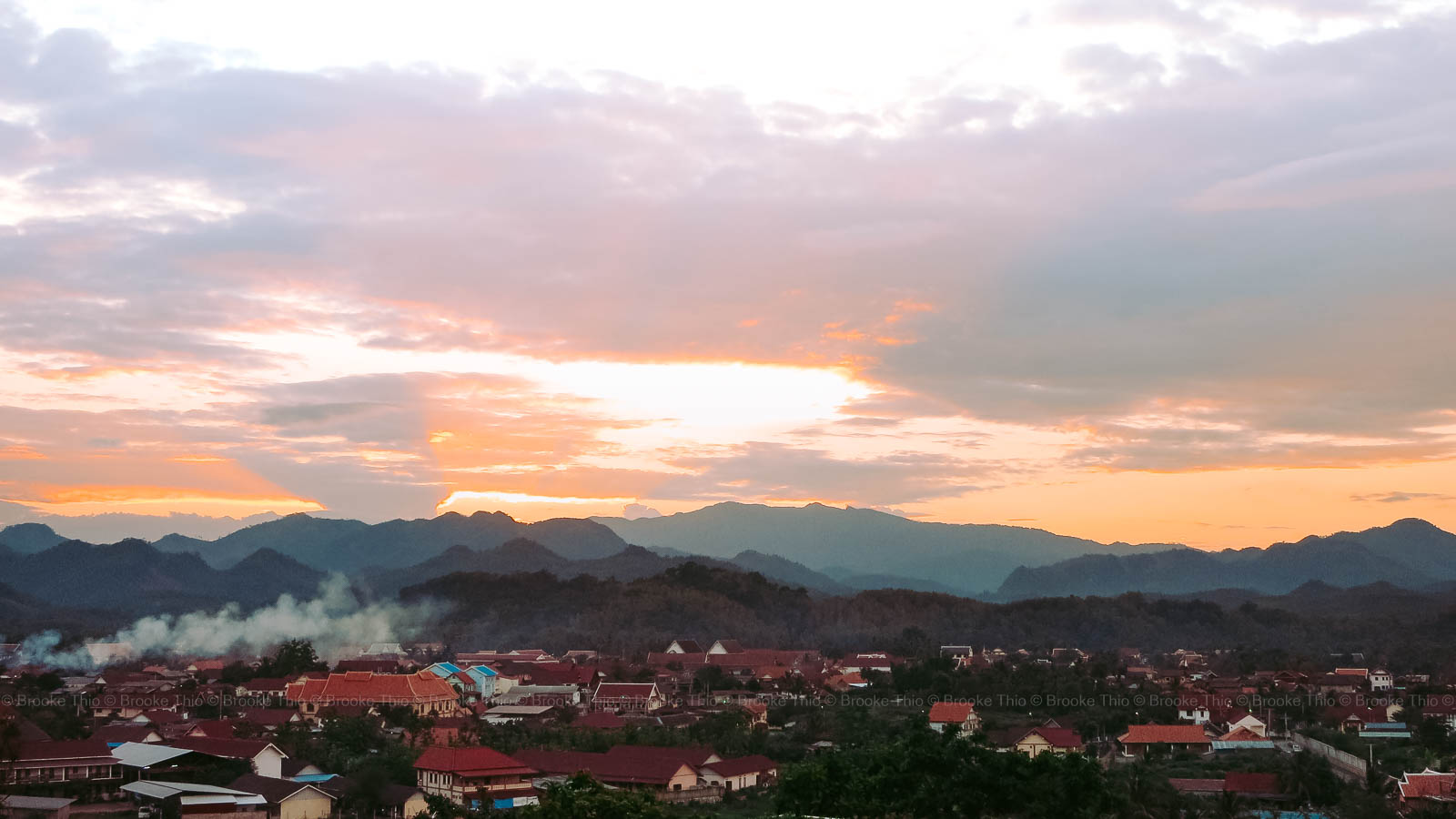
FAQs: visiting Luang Prabang
When is the best time to visit Luang Prabang?
The best time to visit Luang Prabang is October-February, when the weather is cool and dry. March-April is the height of the local crop burning season as the region practices slash-and-burn agriculture, resulting in a choking haze.
May-September are the hottest months, with showers adding to the humidity.
How many days do you need in Luang Prabang?
It depends on your preferred pace of travel – if you like a tight itinerary, you can pack everything on this guide into three full days. As a slow travel advocate, I recommend adding one or two extra days to account for arrival/departure and explore at a more intentional pace.
EXCITED YET?
Explore more of Southeast Asia, from Vietnam to Thailand, with our guides. Better yet, start planning your trip!
- Browse hotels on Booking.com
- Find cheap flights via Kayak
- Book tours and attractions on Viator

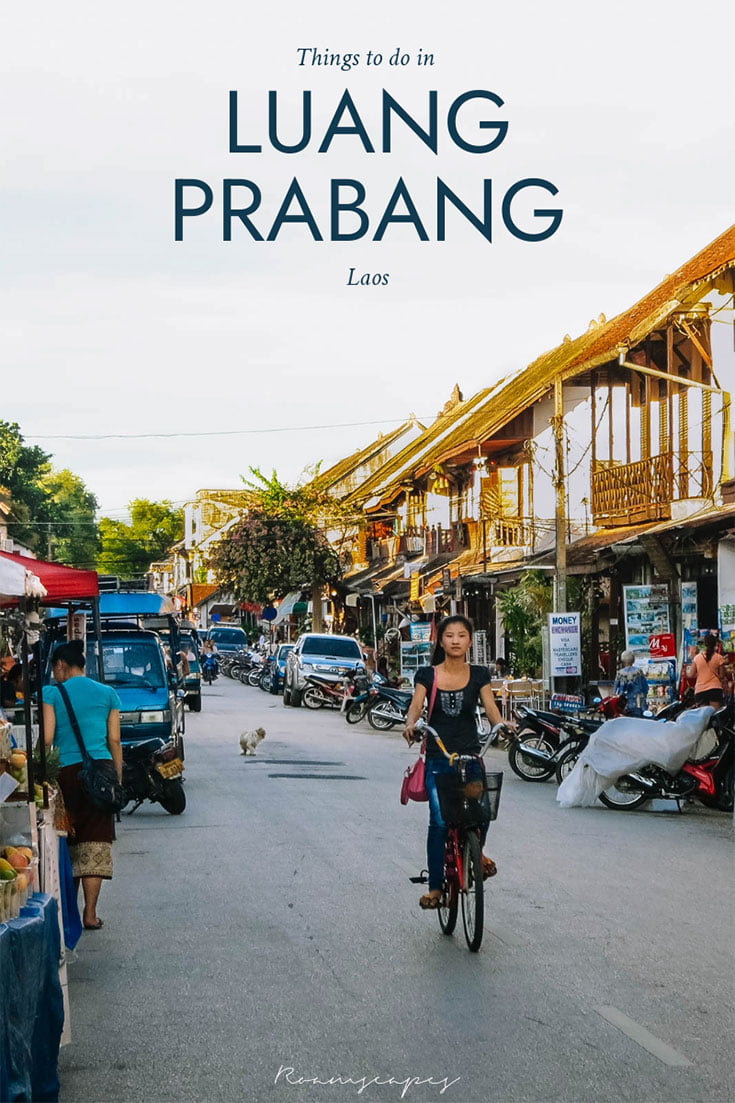
Leave a Reply